C'est ce qu'annonce l'IUCN (International Union for Conservation of Nature)
sur la page d'accueil de l' "IUCN Red List".
Vous qui visitez régulièrement les arboretum, les jardins botaniques et certains jardins privés avertis, vous avez déjà certainement repéré ce LOGO à côté des nominettes de certains arbres.
l'IUCN s'inquiète de la santé de notre planète et fait des bilans sur les espèces qui la peuplent. Elle dénombre pas moins de 26.500 espèces concernées par une extinction prochaine, tous règnes confondus.
ET LES CONIFERES ?
En tant que passionnés de Conifères, nous avons plongé notre nez dans ces listes et nous en ressortons choqués.
34% des espèces de conifères sont menacées.
Comme l'avertit la communauté scientifique, nous vivons la 6ème grande extinction de masse que la terre connaisse. Certains diront, la 6ème, ce n'est donc pas nouveau. la 5ème a eu lieu lors de la dernière glaciation, qu'y pouvons nous?
Et bien justement ! Cette dernière extinction a de particulier, d'être la première dûe aux activités humaines elles-mêmes, et au réchauffement climatique qui en découle.
Il y a quand même de quoi essayer de se remettre un peu en question non?
Dans sa bannière statistique, l'IUCN annonce les poucentages relatifs au monde animal, principalement. Seuls les conifères sont les représentants du monde végétal. Ce ne sont évidemment pas les seuls, mais pourquoi sont-ils aussi significatifs?

Victimes de leur mauvaise réputation, ils souffrent de négligeance de la part des hommes. De plus, avec leur feuillage persistant, ils éprouvent plus de difficultés à supporter les changements climatiques. Ils aiment leurs petites habitudes et les périodes froides, pluvieuses, neigeuses, leurs sont très souvent vitales. De tout le règne végétal, ils sont sans doute des plus fragiles face aux changements qui s'annoncent. Lors de la dernière glaciation, leur élimination avait déjà été drastique.
L'intérêt des feuillages persistants
Si on observe le monde végétal, de façon très globale, on peut distinguer deux groupes de plantes à feuillage persistant:
- Les plantes tropicales. Elles ne connaissent pas le climat tempéré, les grandes variations de température, et connaissent des cycles végétatifs à tout moment de l'année. Elles se cantonnent principalement aux alentours de l'équateur. Elles sont généreuses, poussives et contribuent en masse à fournir de l'oxygène au monde vivant qui en a besoin. Et elles le font toute l'année, quel cadeau !
- Certaines plantes des climats tempérés comme les conifères et quelques rhodos, lauriers cerises, andromèdes. Toutes ces plantes devraient être choyées dans nos régions tempérées, car ce sont les seules qui nous apportent de l'oxygène en hiver.
En plus de produire de l'oxygène, les plantes dépolluent l'air, filtre l'eau, empèchent l'érosion, transpirent et activent la pluie, nous éloignent donc de la sécheresse, et nous protège de bien d'autres choses encore. Elles apportent abri et nourriture à nombre d'insectes, d'oiseaux et de mammifères.
Préserver des plantes persistantes dans les régions tempérées est vraiment primordial. Elles équilibrent nos productions humaines polluantes, étouffantes, en période hivernale; alors que les espèces caduques sont en dormance.
Alors s'il vous plaît, c'est notre réelle prière:
Arrêtez de couper vos conifères,
mais plantez-en de taille plus raisonnable, à des endroits judicieux pour qu'ils n'assombrissent pas trop votre environnement.
IUCN RED LIST - Les catégories
La liste rouge présente plusieurs catégories d'urgence:
- LC: Least Concern - Préoccupation mineure
- NT: Near Threatened - Presque menacée
- VU: Vulnerable - Vulnérable. Ces espèces présentent un grand risque d'extinction
- EN: Endangered - En dangé. Ces espèces présentent un très grand risque d'extinction
- CR: Critically Endangered - En dangé critique. Ces espèces sont presque éteintes
- EW: Extinct in the Wild - Eteinte dans la nature. ces plantes n'existent plus à l'état naturel, mais encore dans les conservatoires, jardins botaniques et arboretum.
- EX: Extinct - Eteinte.
QUELS SONT LES CONIFERES CONCERNES ?
Nous vous présentons ici les trois catégories préoccupantes: VU, EN et CR.
Il y a de quoi parfois être vraiment étonné. Vous ne regarderez plus le Cèdre de l'Atlas du quartier du même oeil, ni l' Araucaria araucana ou encore le Ginkgo biloba.
Depuis que la liste rouge existe, créée en 1964, il n'y a pas encore d'espèce de conifères qui se soit totalement éteinte dans la nature ou complètement de la surface de la terre; ou aucun qui n'ait été répertorié, mais cela ne nous rassure guère.
▼ populations toujours décroissantes
◄► populations stables
▲ populations en croissance
? information non disponible
VU: Vulnerable - Vulnérable. Ces espèces présentent un grand risque d'extinction
Abies Squamata ▼ (Arboretum de Kalmthout - Belgique)
(1).JPG)
.JPG)
Abies fabri ▼
Abies hidalgensis ?
Abies recurvata ▼
Afrocarpus mannii ◄►
Agathis flavescens ◄►
Agathis lanceolata ▼
Agathis lenticulata ▼
Agathis dammara ▼ (Jardin Botanique de Puerto de la Cruz -Tenerife/Espagne)
.JPG)
(1).JPG)
Agathis moorei ▼
Amentotaxus formosana ◄►
Amentotaxus yunnanensis ▼
Amentotaxus poilanei ◄►
Araucaria bernieri ▼
Araucaria biramulata ▼
Araucaria montana ▼
Arauvaria schmidii ◄►
Araucaria heterophylla ▲ (Jardin Botanique de Puerto de la Cruz -Tenerife/Espagne)
.JPG)
.JPG)
Athrotaxis cupressoides ▼
Athrotaxis selaginoides ▼
Callitris monticola ▼
Callitris oblonga ▼
Cathaya argyrophylla ◄►
Cedrus libani ▼ (Parc botanique Lyon - France)
.JPG)
Cephalotaxus mannii ▼
Cephalotaxus oliveri ▼
Cupressus macrocarpa◄►
Cupressus bakeri ▼
Cupressus chengiana ▼
Cupressus sargentii ▼ (Botanical Gardens Pinetum Blijdenstein à Hilversum -Pays-Bas)
.JPG)
Dacrycarpus leptophyllum ◄►
Dacrydium medium ▼
Dacrydium leptophyllum ◄►
Gnetum globosum ▼
Gnetum contractum ▼
Gnetum acutum ▼
Juniperus brevifolia ▼
Juniperus barbadensis ▼
Juniperus Tibetica ▼
Juniperus angosturana ▼
Nageia motleyi ▼
Parasitaxus usta ▼
Picea asperata ▼ (Jardin botanique de Meise - Belgique)
.JPG)
Picea brachytyla ?
Picea breweriana ▼ (Les jardins du Florilège à Bastogne - Belgique)
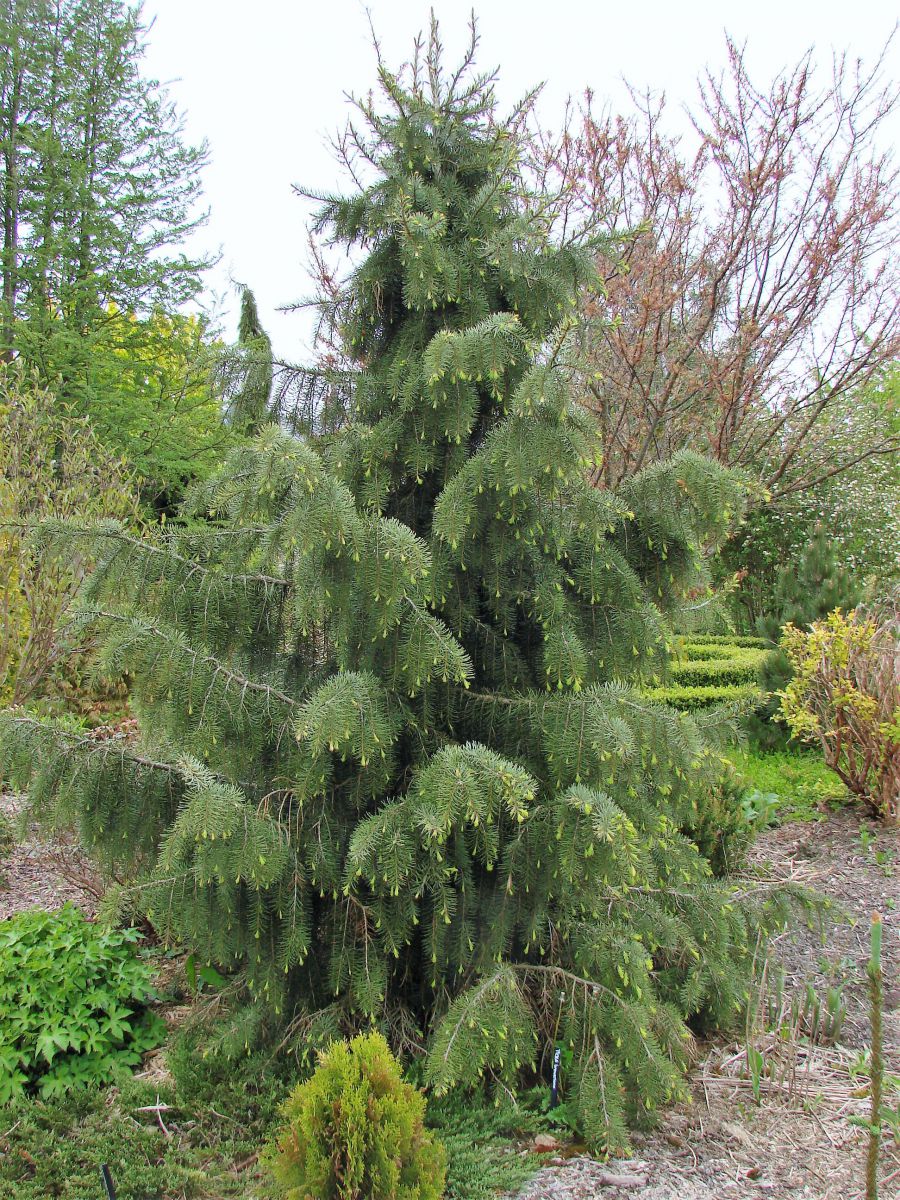
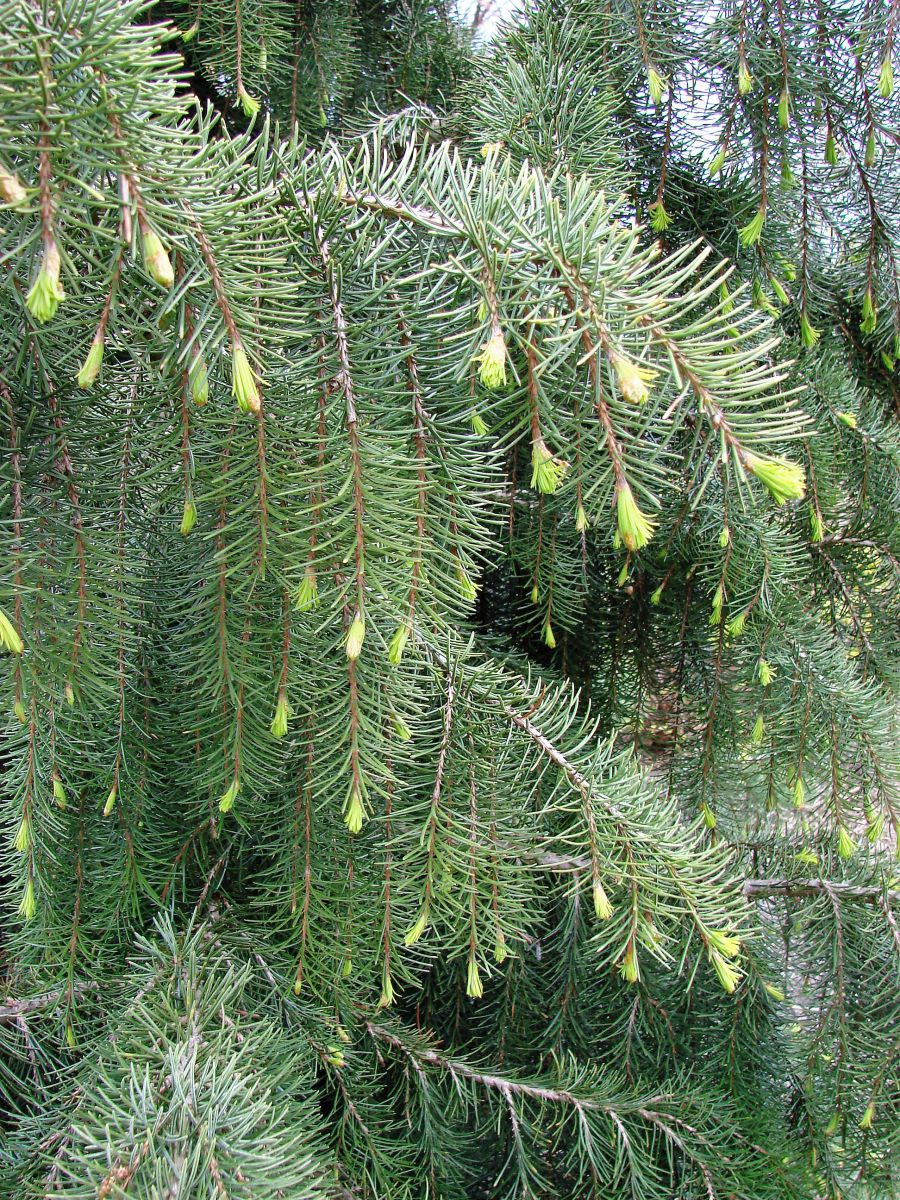
Picea farreri ?
Picea likiangensis ?
Picea morrisonicola ◄►
Picea torano ▼
Pinus gregii ▼
Pinus krempfi ▼
Pinus merkusii ▼
Pinus muricata ?
Pinus rzedowskii ◄►
Pinus tecunumanii ▼
Pinus tropicalis ▼
Podocarpus angustifolius ▼
Podocarpus archiboldii ?
Podocarpus fasciculus ?
Podocarpus gibbsiae ◄►
Podocarpus lophatus ?
Podocarpus matudae ▼
Podocarpus pallidus ?
Podocarpus polystachyus ▼
Podocarpus ridleyi ▼
Podocarpus rusbyi ▼
Podocarpus salignus ▼ (Savill Garden à Windsor - Angleterre)
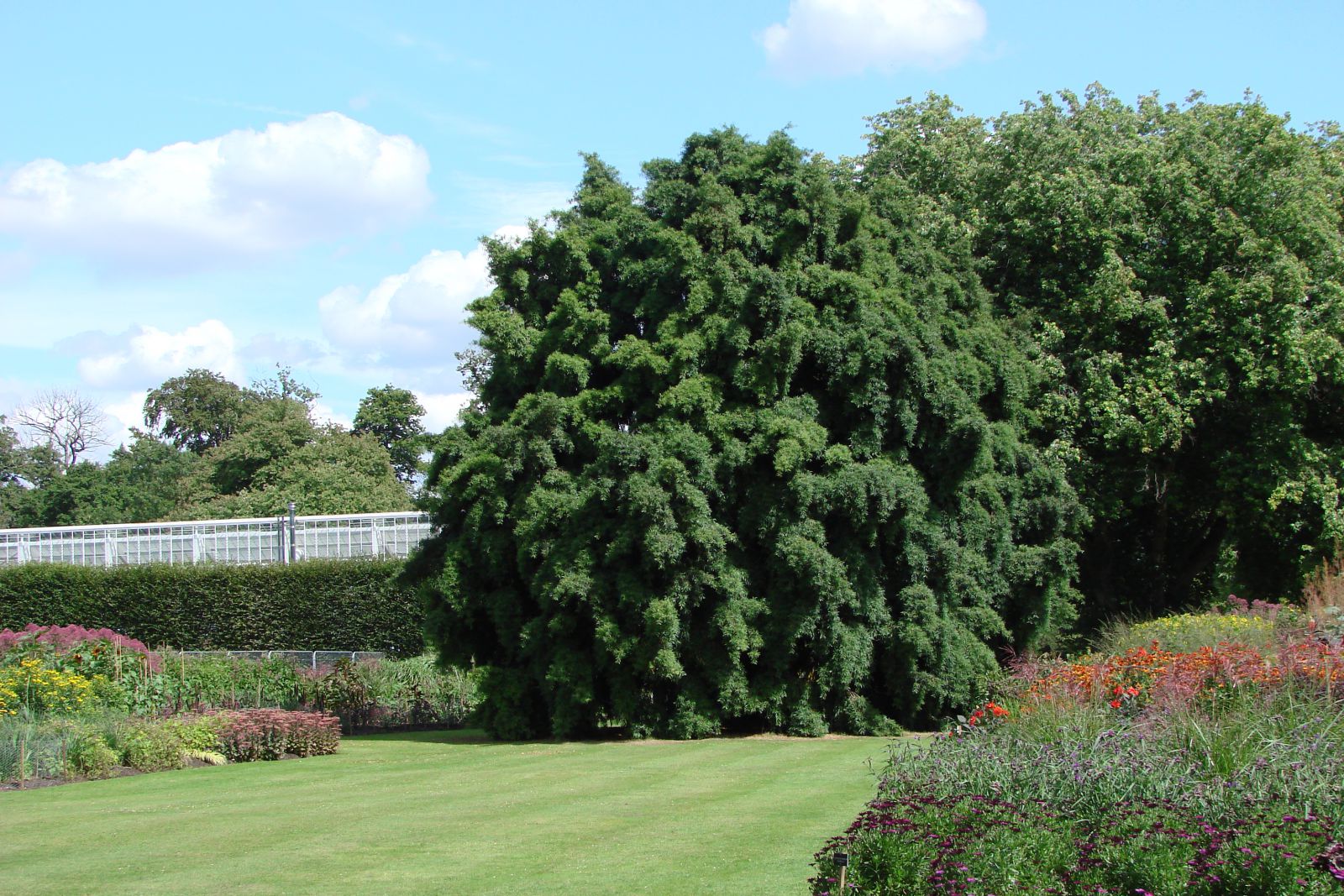
Prumnopitys andina ▼
Prumnopitys ladei◄►
Prumnopitys montana ▼
Pseudolarix amabilis ▼
Pseudotaxus chienii ▼
Taiwania cryptomerioides▼ (Jardin botanique de Lucca - Italie)
.jpg)
.jpg)
Taxus mairei ▼
Thuja koraiensis ▼
Torreya californica ?
Torreya fargesi ▼
Tsuga forrestii ?
EN: Endangered - En dangé. Ces espèces présentent un très grand risque d'extinction
Abies koreana - Sapin de Corée ▼ (Les jardins du Florilège à Bastogne - Belgique)
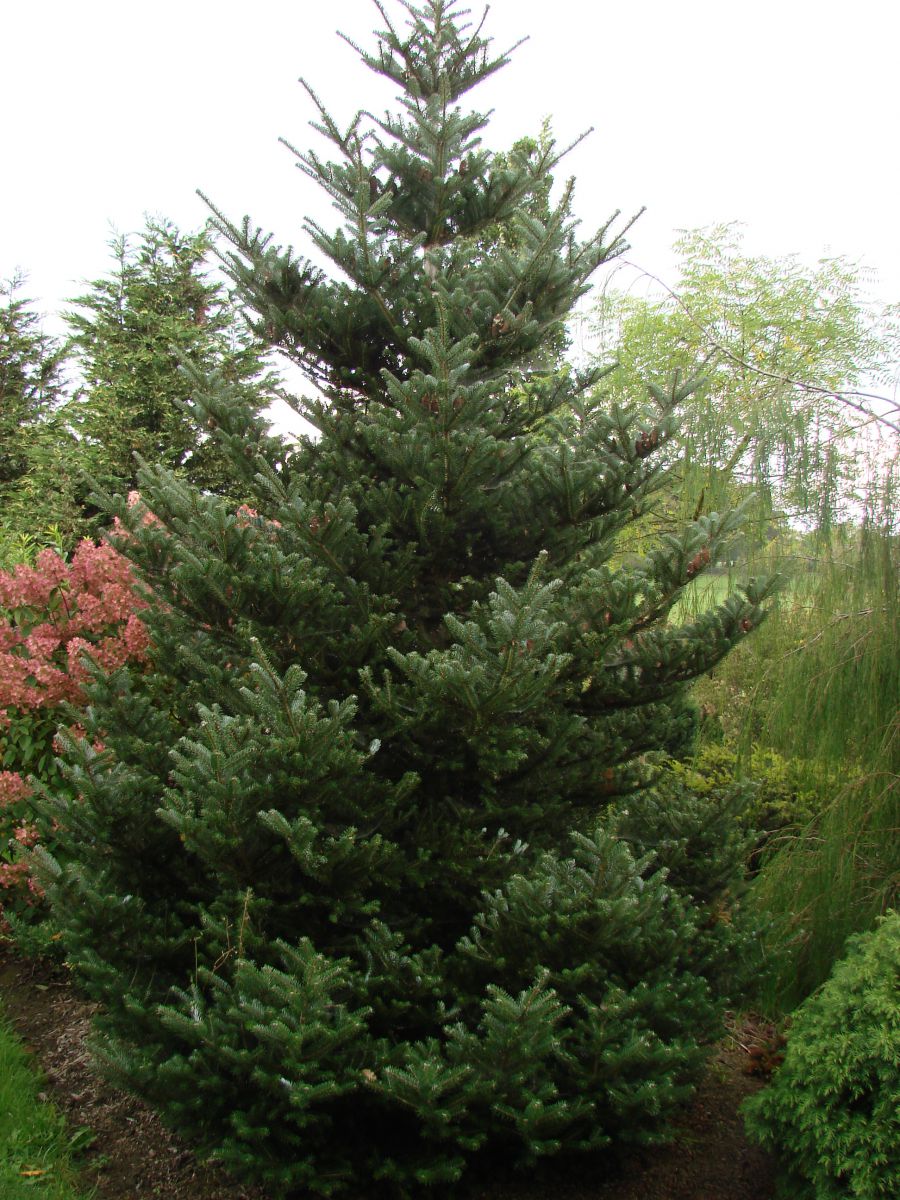
.JPG)
Abies pinsapo - Sapin d'Espagne ▼ (Kew Royal Botanic gardens à Londres - Angleterre)

Abies guatemalensis ▼
Abies fraseri ▼ (Jardin botanique de Benmoor - Ecosse)
.JPG)
.JPG)
Abies fanjingshanensis ▼
Abies hickelii ▼
Abies ziyuanensis ▼
Afrocarpus usambarensis ▼
Agathis ovata ▼
Agathis kinabaluensis ▼
Agathis macrophylla ▼
Agathis orbicula ▼
Agathis borneensis ▼
Amentotaxus assamica ▼
Araucaria araucana ▼ (Jardin botanique de Glasgow - Ecosse)
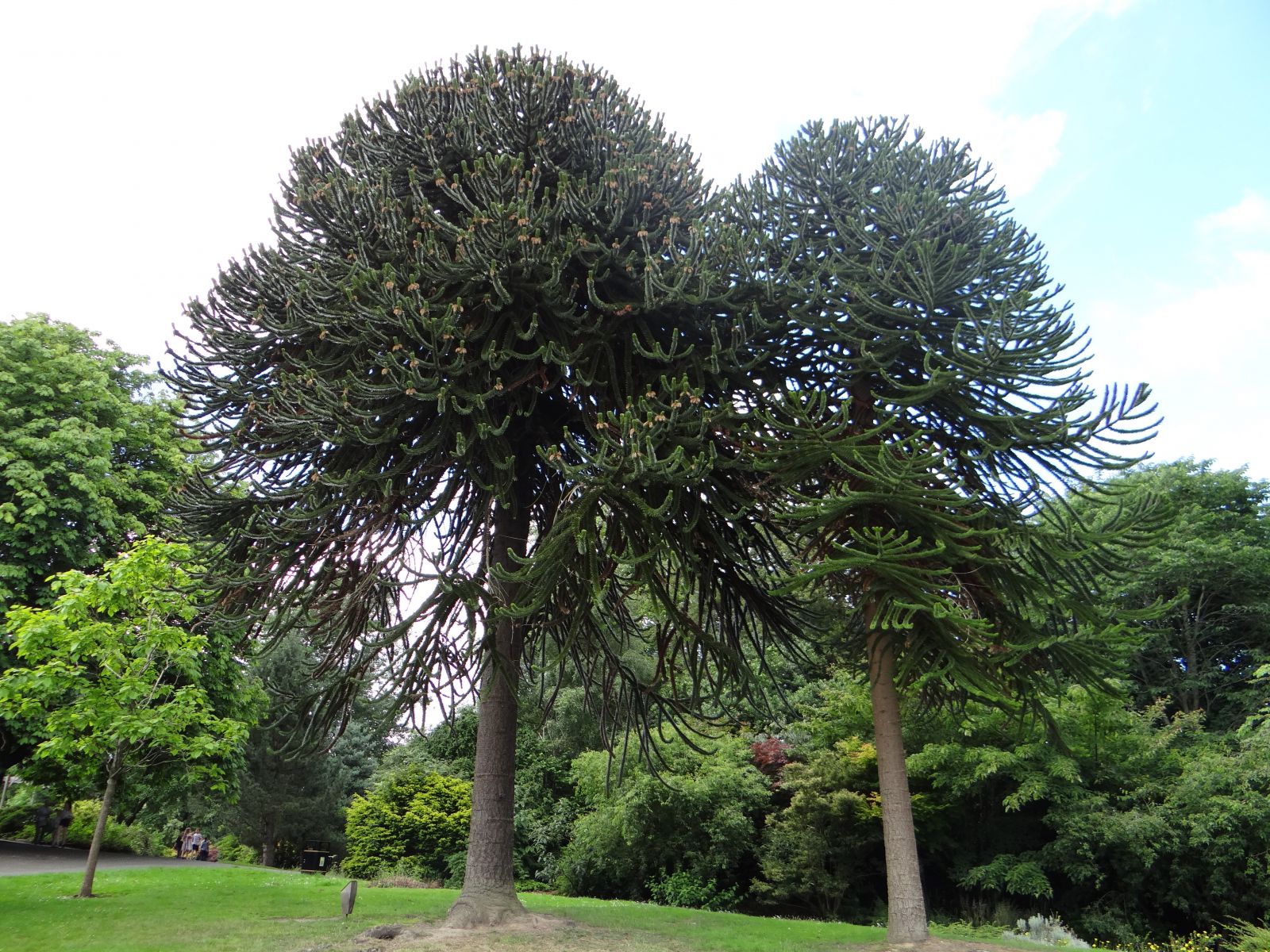
Araucaria luxurians ▼
Araucaria rueli ▼
Araucaria scopulorum ▼
Araucaria humboldtensis ▼
Araucaria muelleri ▼
Araucaria goroensis ◄►
Athrotaxis laxifolia ▼
Callitris sulcata ▼
Calocedrus rupestris ▼
Calocedrus formosana ▼ (jardin de l'Etang de Launay à Varengeville-sur-Mer - France)
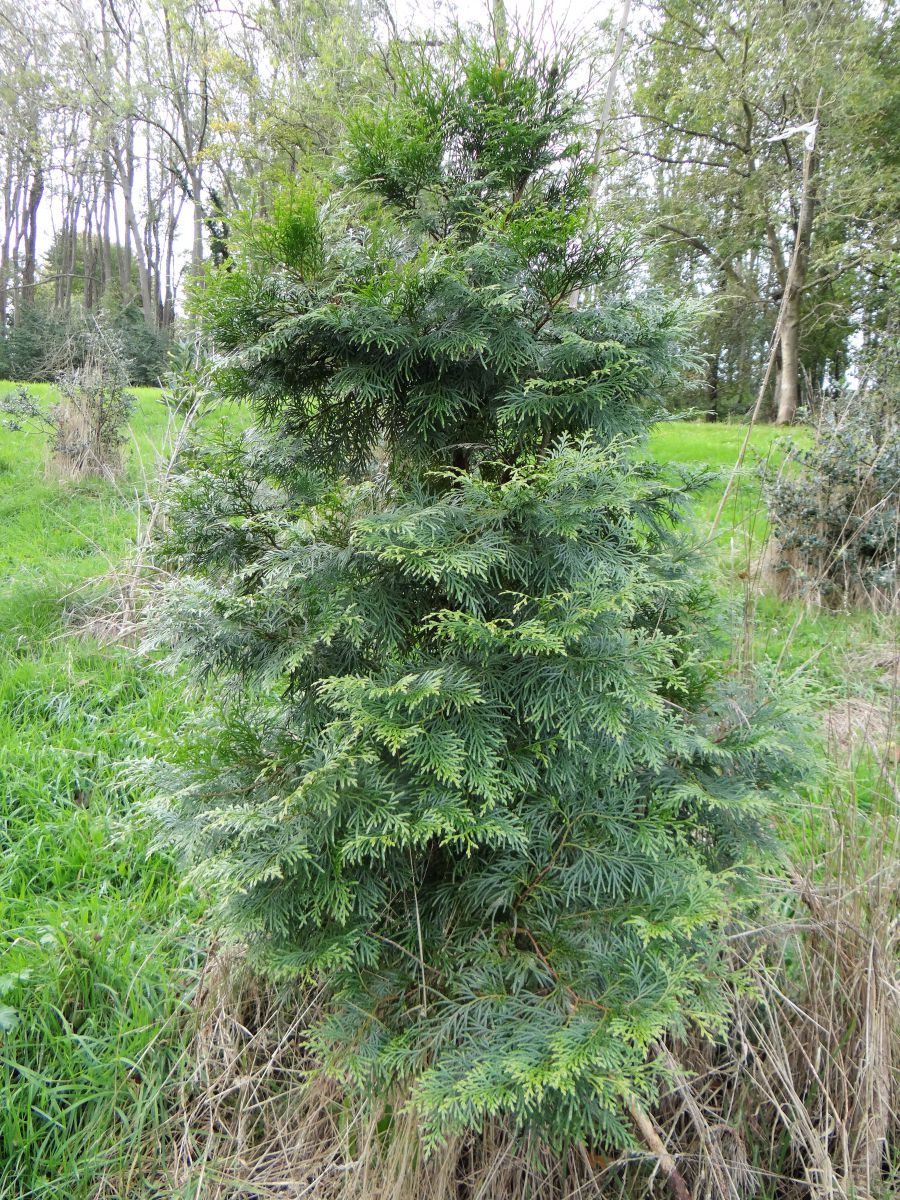
.JPG)
Cedrus atlantica ▼ (Kew Royal Botanic gardens à Londres - Angleterre)
.JPG)
Cephalotaxus hainanensis ▼
Cephalotaxus lanceolata ▼
Chamaecyparis formosensis ?
Cunninghamia konishii ▼
Cupressus dupreziana ▼
Cupressus guadalupensis ▼
Cupressus goveniana ▼
Dacrydium nausoriense ▼
Dacrydium comosum ▼
Dacrydium pectinatum ▼
Falcatifolium angustum ▼
Fitzroya cupressoides ▼
Ginkgo biloba ? (Beesbetz - Belgique)
.JPG)
Gnetum oxycarpum ▼
Juniperus comitana ▼
Juniperus cedrus ▼
Juniperus standleyi ▼
Juniperus camboana ▼
Juniperus gracilior ▼
Larix mastersiana ▼
Libocedrus yateensis ▼
Metasequoia glyptostroboides ▼ (Jardin botanique de Meise - Belgique)
.JPG)
.JPG)
Nageia maxima ▼
Neocallitropsis pancheri ▼
Picea aurantiaca ▼
Picea chihuahuana ▼
Picea martinezii ▼
Picea maximowiczii ▼
Picea omorika ▼ (CR12 - grand Duché de Luxembourg)
.JPG)
.JPG)
Picea retroflexa ▼
Pinus albicaulis ▼
Pinus amamiana ▼
Pinus culminicolas ▼
Pinus maximartinezii ▼
Pinus nelsonii ▼
Pinus occidentalis ▼
Pinus palustris ▼
Pinus radiata ▼ (Pépinière Stone Lane Garden à Newton Abbot - Angleterre)

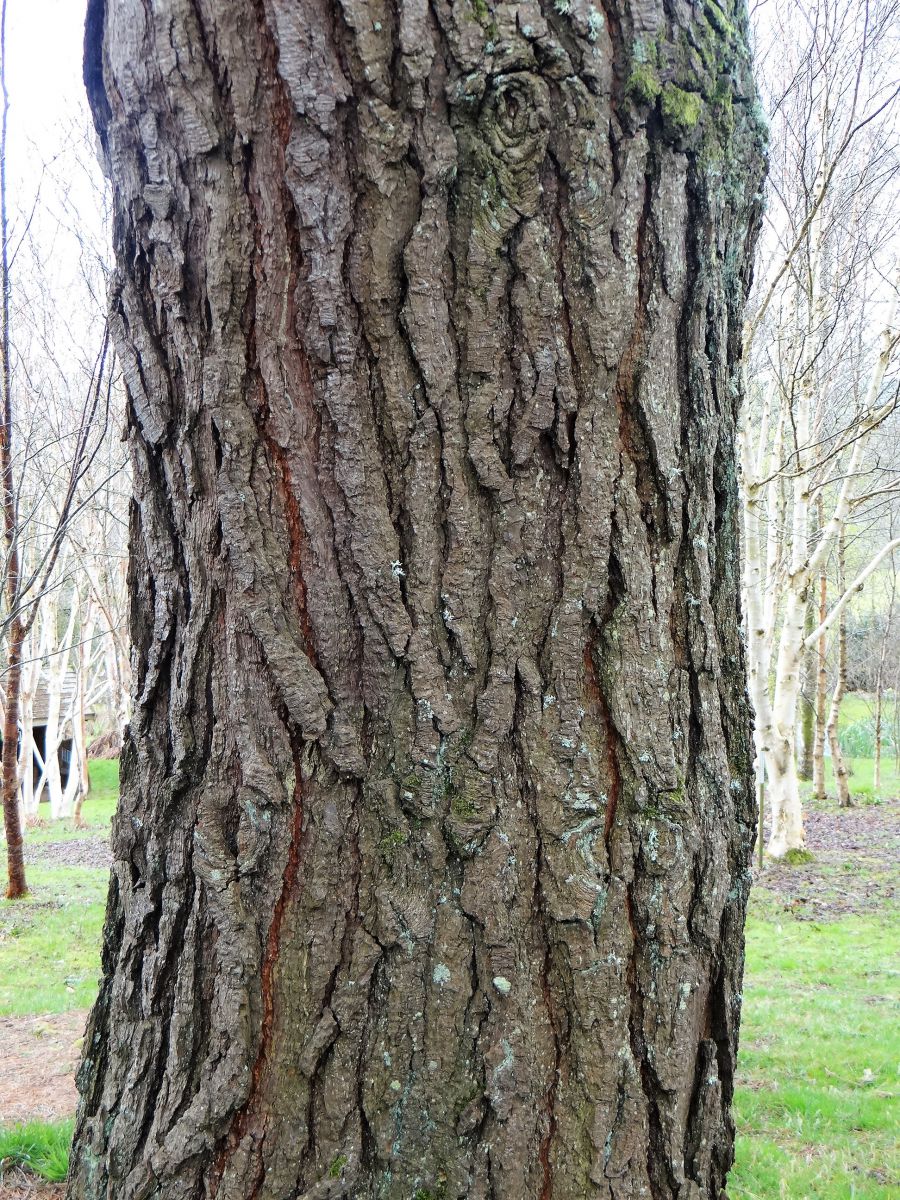
Pinus wangii ▼
Podocarpus capuronii ▼
Podocarpus confertus ▼
Podocarpus costalis ▼
Podocarpus globulus ▼
Podocarpus henkelii ▼
Podocarpus hispaniolensis ▼
Podocarpus humbertii ▼
Podocarpus laubenfelsii ▼
Podocarpus longefoliolatus
Podocarpus macrocarpus ▼
Podocarpus nakaii ▼
Podocarpus pendulifolius ▼
Podocarpus polyspermus ▼
Podocarpus purdieanus ▼
Podocarpus rostratus ▼
Podocarpus transiens ▼
Podocarpus sellowii ▼
Podocarpus sprucei ▼
Prumnopitys standleyi ▼
Sequoia sempervirens ▼
Sequoiadendron giganteum ▼
Taxus contorta ▼
Taxus wallichiana ▼ (Jardin botanique de Meise - Belgique)
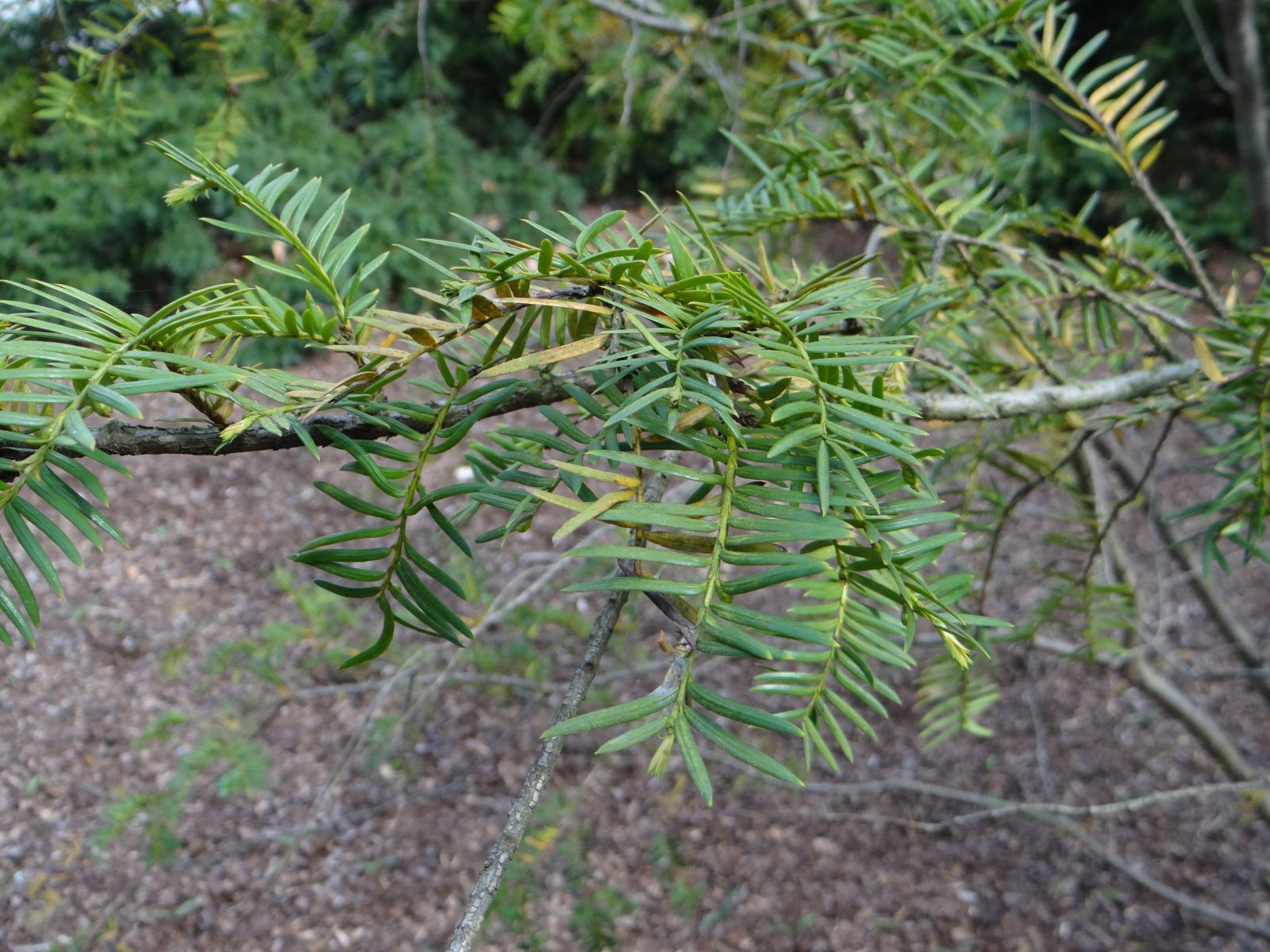
Taxus chinensis ▼
Taxus globosa ▼
Thuja sutchuenensis ▲
Xanthocyparis vietnamensis ▼
CR: Critically Endangered - En dangé critique. Ces espèces sont presque éteintes
Abies numidica ▼ (Wakehurst Place Kew Gardens à Ardingly - Angleterre)
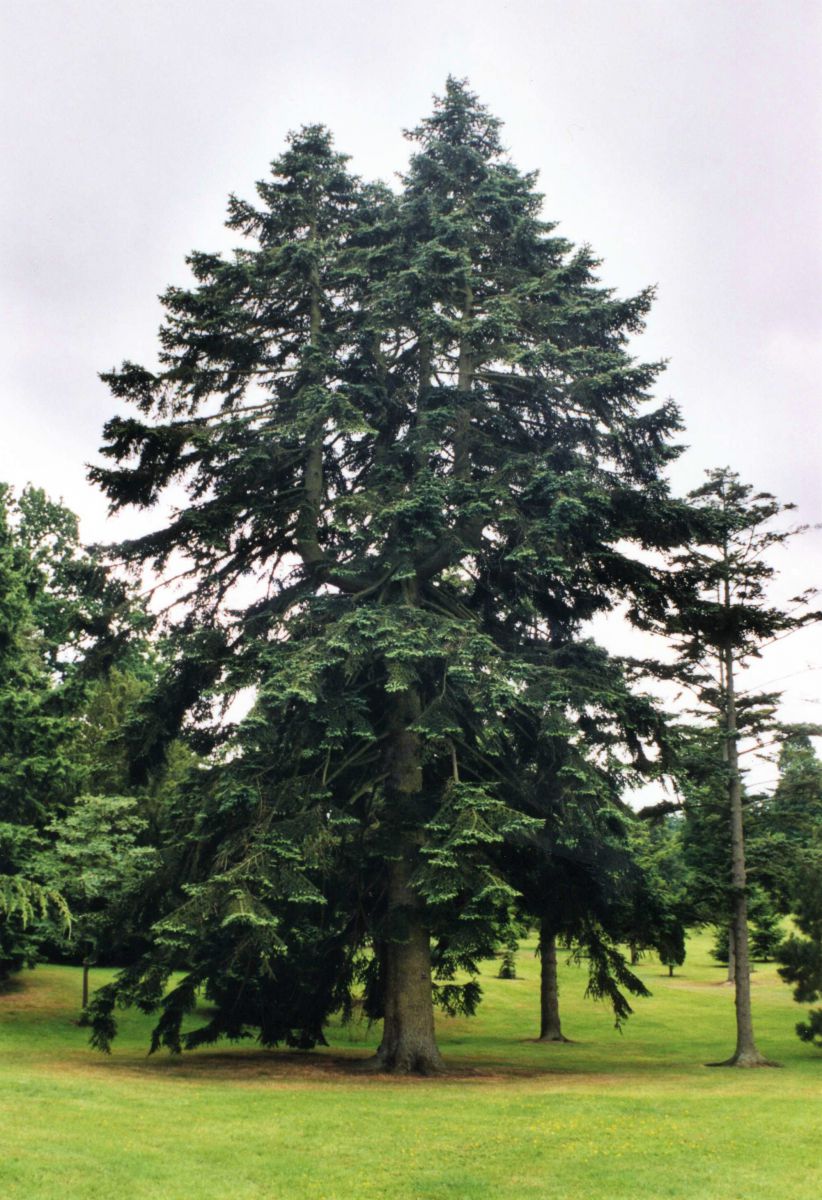
Abies yuanbaoshanensis ▼
Abies beshanzuensis ▼
Acmopyle sahniana ?
Agathis montana ▼
Araucaria nemorosa ▼
Araucaria angustifolia ▼ (Parc botanique Lyon - France)
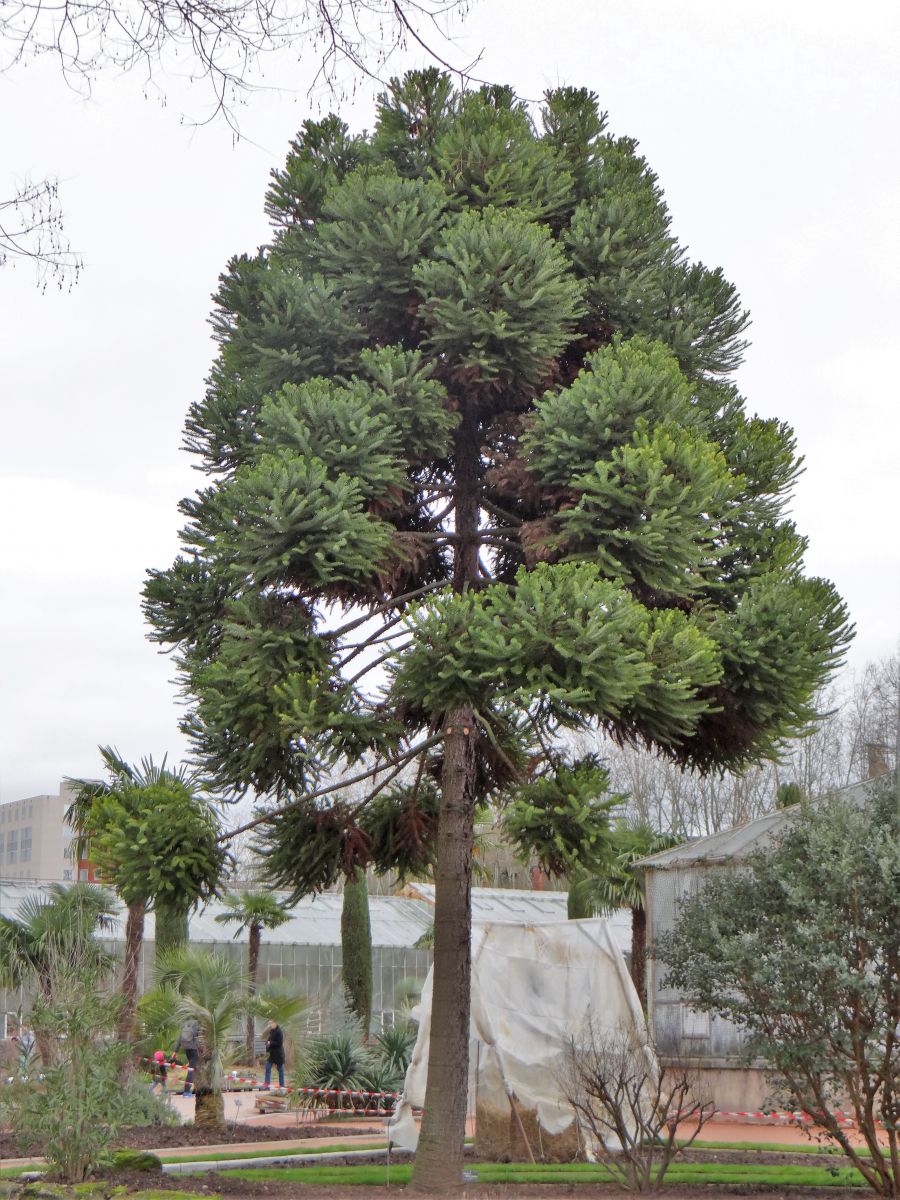
Dacrydium guillauminii ▼
Glyptostrobus pensilis ▼
Juniperus saxicola ▼
Juniperus bermudiana ▲
Libocedrus chevalieri ?
Pherosphaera fitzgeraldii ?
Pinus cernua ?
Pinus squamata ?
Podocarpus costaricensis ?
Podocarpus decumbens ◄►
Podocarpus palawanensis ▼
Podocarpus urbanii ▼
Taxus floridana ▼
Torreya jackii ▼
Torreya taxifolia ▼ (Botanical Gardens Pinetum Blijdenstein à Hilversum - Pays-Bas)
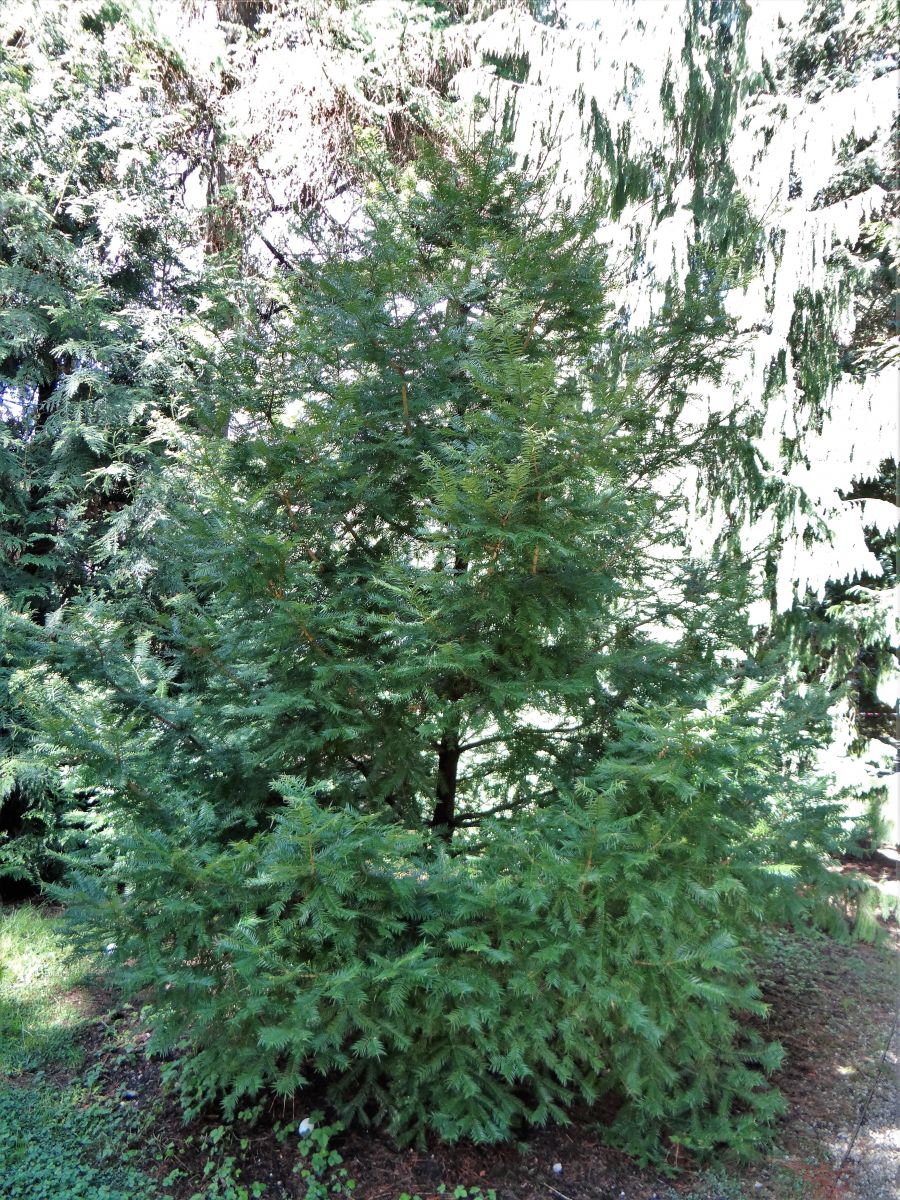
.JPG)
Widdringtonia cedarbergensis ▼
Widdringtonia whytei ▼
Wollemia nobilis ? (Kew Royal Botanic gardens à Londres - Angleterre)
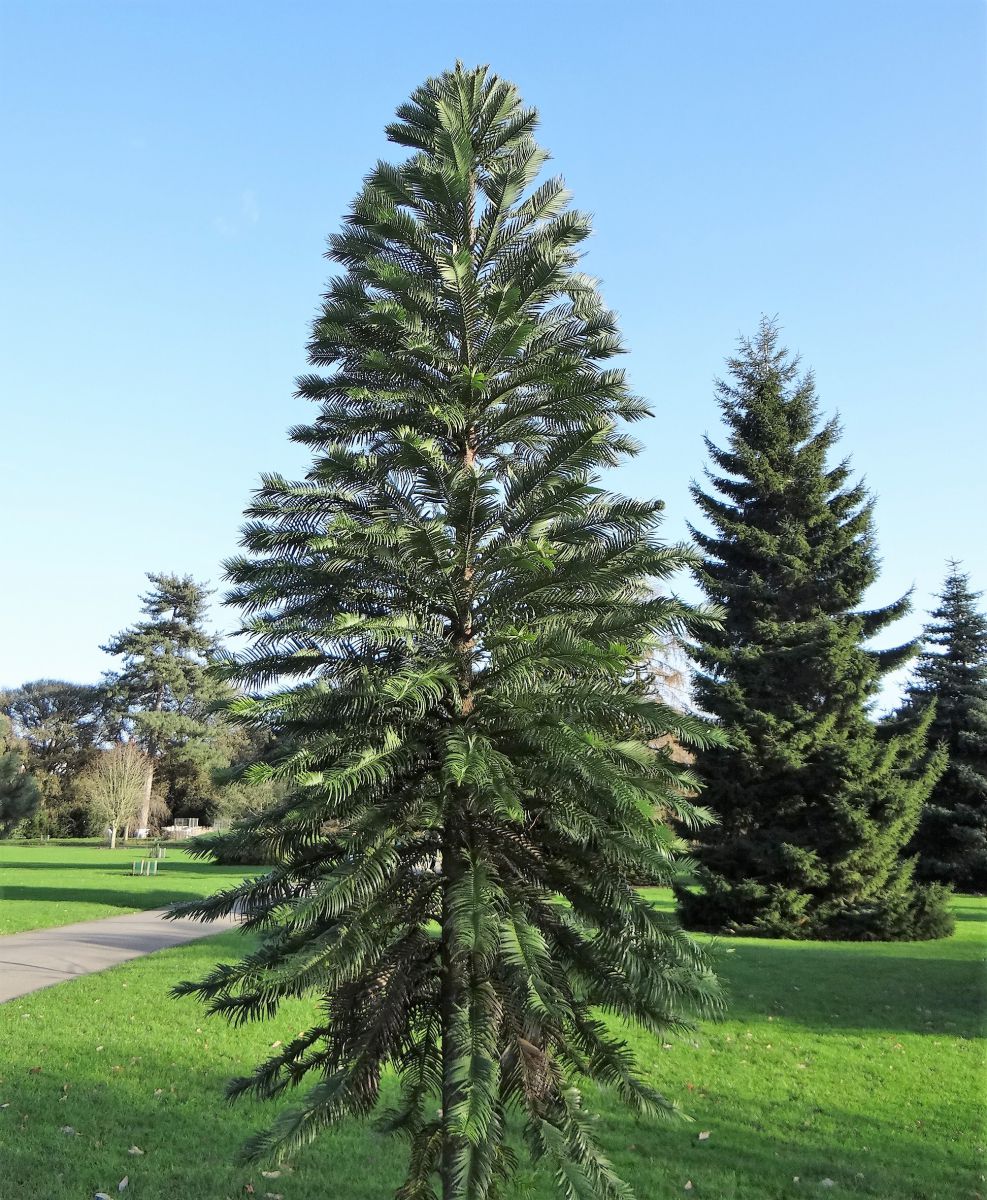
Prenez soin de la planète, plantez !
Et plantez varié !
Plantez des conifères !